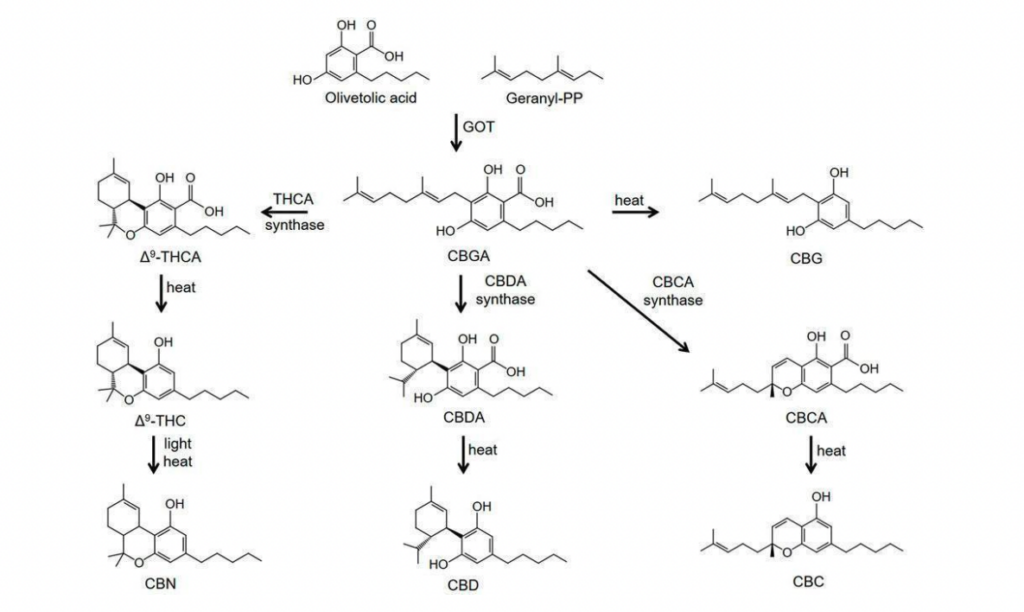The U.S. Department of Agriculture (USDA) has approved a genetically modified variety of industrial hemp designed produce high levels of the CBG (cannabigerol) while eliminating all THC and CBD.
CBG is one of 120 cannabinoids found in cannabis. While cannabis stakeholders have long been focused on developing THC and CBD, researchers and hemp breeders started developing CBG-rich cultivars at least as far back as 2021.
The new hemp variety, called “Badger G,” was developed by the University of Wisconsin’s Crop Innovation Center.
USDA’s Animal and Plant Health Inspection Service (APHIS) said the new variety “may be safely grown and bred in the United States” and is “unlikely to pose an increased plant pest risk compared to other cultivated plants” – the fundamental considerations by the agency in approving modified plant genetics.
‘Mother’ cannabinoid
CBG is known as the “mother” or “OG” cannabinoid, because it is the precursor to CBD (Cannabidiol), CBN (Cannabinol), CBC (Cannabichromene), and THCA (Tetrahydrocannabinolic Acid). Research has shown that CBG could hold the cumulative qualities of combined cannabinoids.
Studies also have shown that taken internally, CBG shows promise as a therapeutic for such afflictions as glaucoma, inflammatory bowel disease and Huntington’s disease, and may inhibit tumor growth in some cases; it is known to kill or slow bacteria and advance bone development.
As a topical, CBG works with the CB1 and CB2 endocannabinoid receptors, serving anti-inflammatory, antibacterial, and antioxidant reactions that help the endocannabinoid system maintain healthy skin function.
Expensive to produce
First discovered in the 1960’s, CBG, which is non-psychoactive, is not under international drug schedules, and is not considered a controlled substance. CBG has also been called “the Rolls-Royce of cannabinoids” due to the costly process of producing it.
The relatively low amount of CBG found in conventional cannabis plants means it takes thousands of pounds of biomass to isolate even small amounts of the compound, and therefore prices to the end user have historically been high.
The European Commission last year added CBG to the EU’s cosmetic ingredient database (Cosing), clearing the compound as safe for use in health & beauty products.
THC security for farmers
The researchers said eliminating THC will give farmers relief from their crops going “hot” or over the federal limit for industrial hemp of 0.3% THC.
“Approximately 25% of the hemp crop in the US is discarded due to THC/THCA levels beyond the 0.3% threshold set forth in the 2018 Farm Bill,” the researchers said in their application for approval of Badger G. “Our new line will allow farmers to be in full compliance with these regulations.”
USDA-APHIS last year approved a different hemp variety genetically engineered to produce super-low levels of THC and cannabichrome (CBC), a minor cannabinoid also present in hemp.

